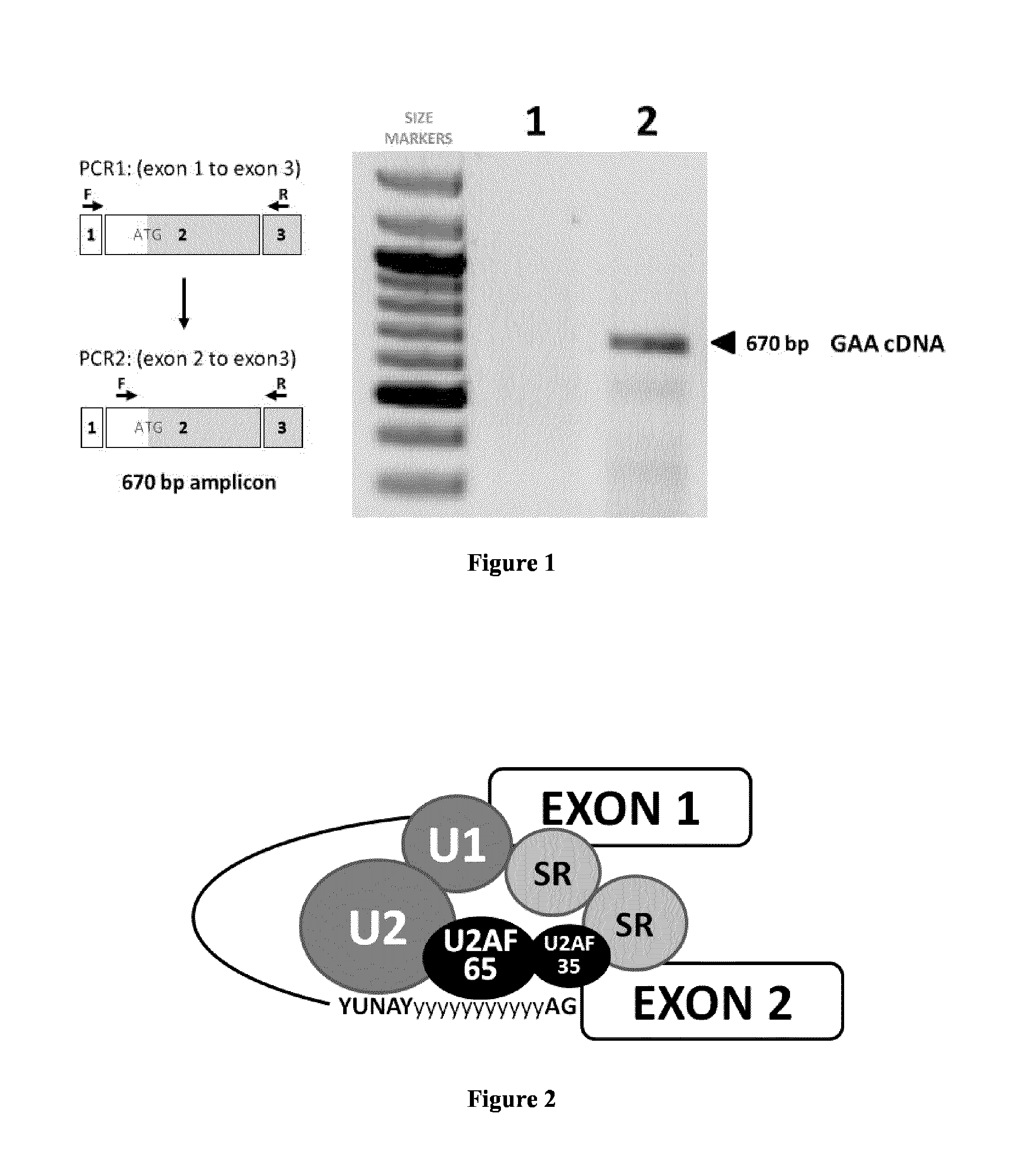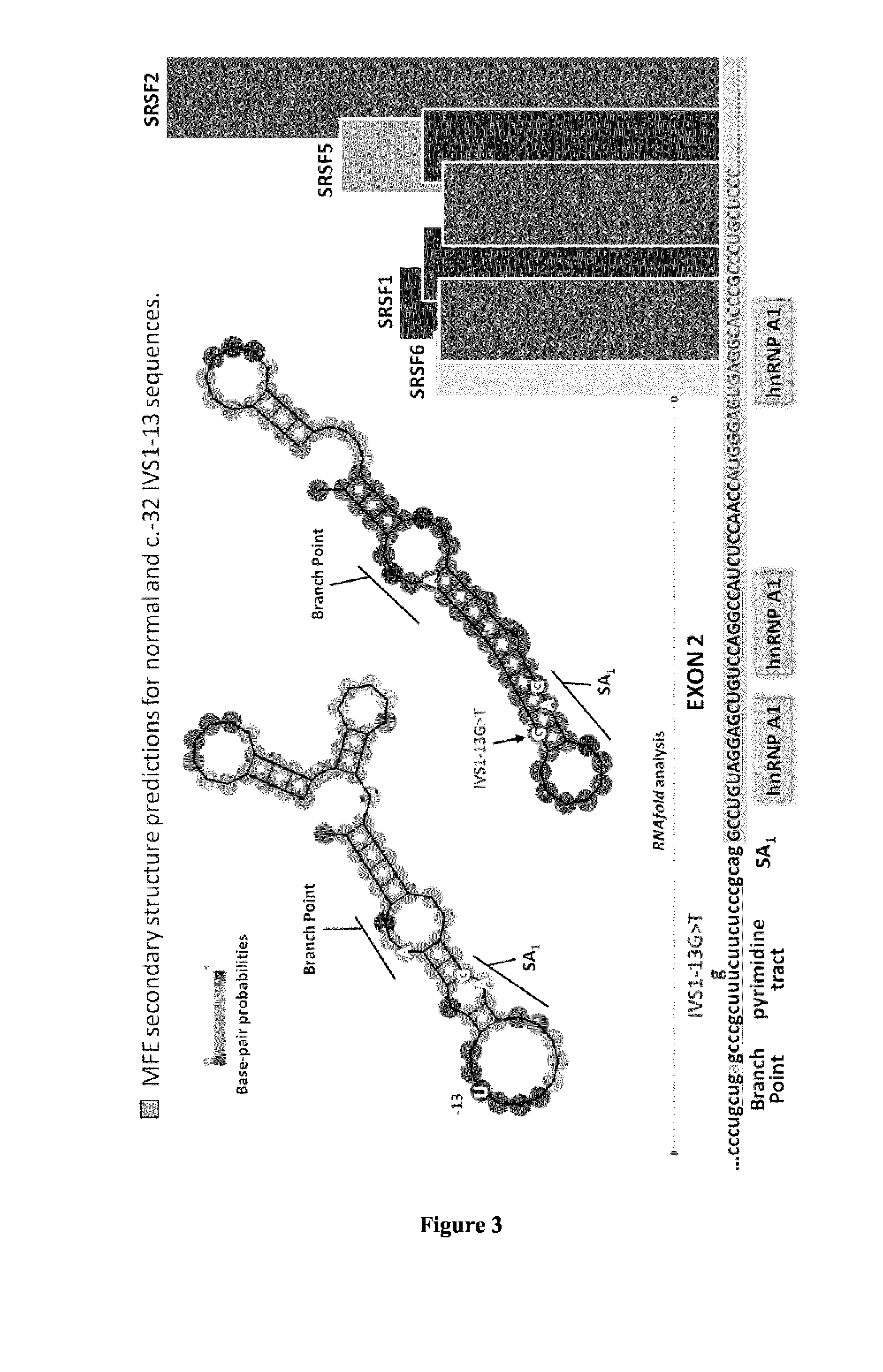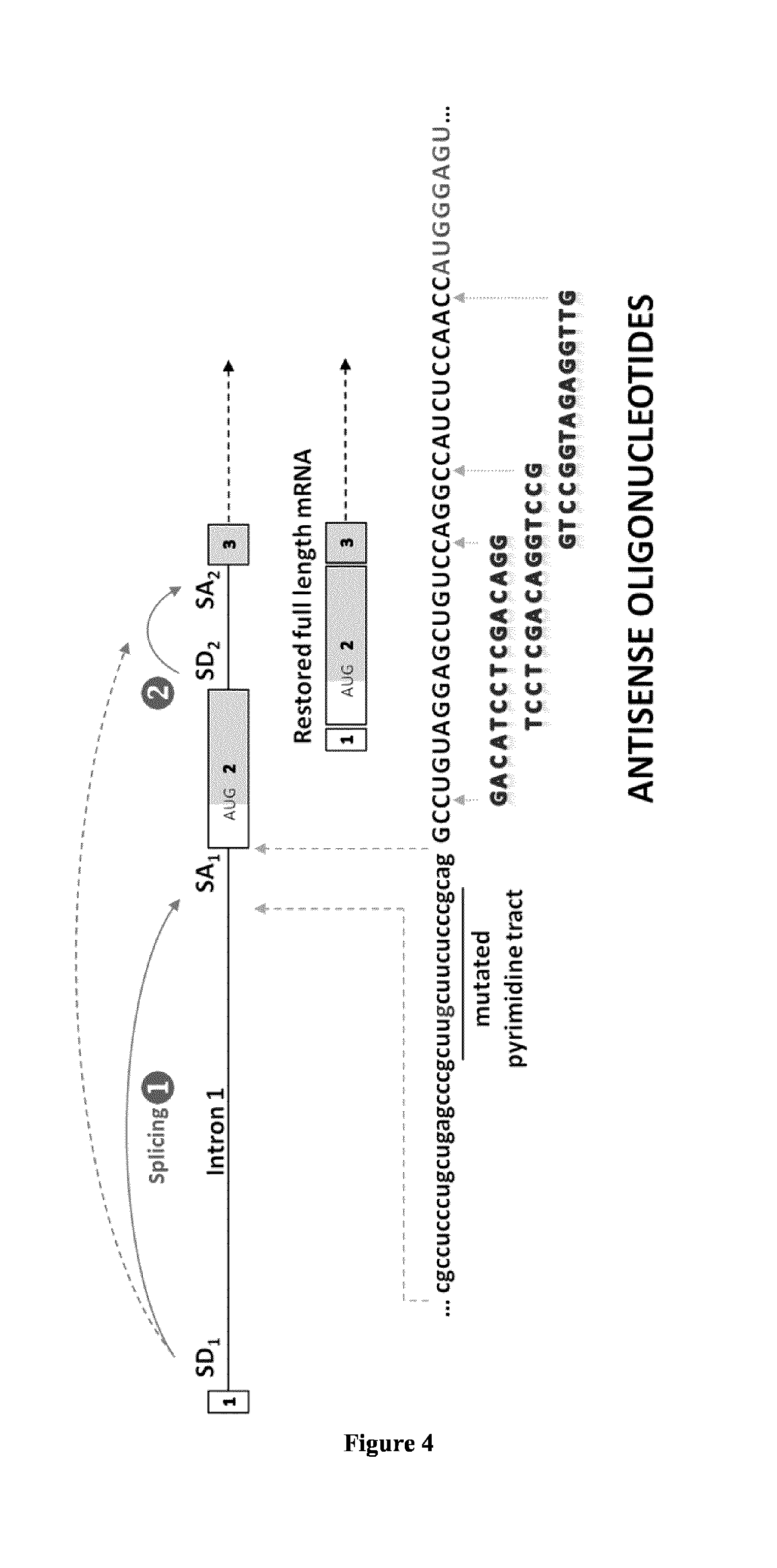Nucleic acids and methods for the treatment of pompe disease
a technology of nucleic acids and pompe disease, applied in the field of nucleic acids and methods, can solve the problems of pompe disease being an untreatable disorder, affecting the treatment effect, and not always predicting the age of onset and progression, and still posing safety concerns
- Summary
- Abstract
- Description
- Claims
- Application Information
AI Technical Summary
Benefits of technology
Problems solved by technology
Method used
Image
Examples
example 1
[0118]Pompe disease (also called GSD II—Glycogen Storage Disease II) is an inherited recessive disorder caused by mutations in the GAA gene encoding the acid alpha-glucosidase enzyme (also called lysosomal alpha-glucosidase or α-1,4-glucosidase), leading to engorged lysosomal glycogen accumulation and progressive muscular weakness affecting proximal limb and respiratory muscles. The disease encompasses a broad spectrum of clinical phenotypes, which differ in terms of age of onset, extent of organ involvement, and rate of progression: Infantile forms (incidence: 1 / 140,000) usually correlate with a more aggressive disease course and most patients die by age one; Children and adult forms (incidence: 1 / 60,000) are more variable across patients; always resulting in loss of ambulation, ventilation support and premature mortality.
[0119]Hundreds of GAA mutations have been identified, but some are more common among given ethnic groups. Among them, the c.-32 IVS1-13 T>G mutation is found in o...
example 2
[0123]Experiments similar to those described in Example 1 were carried out using 2′-O-Met oligomers (FIG. 6) thus confirming that different chemistries for the synthesis of synthetic antisense oligonucleotides can be used for GAA rescue in c.-32 IS1-13 GSD II cells.
example 3
[0124]Experiments similar to those described in Examples 1 and 2 were carried out using the U7 system (FIG. 7) thus confirming that further antisense chemistries such as engineered snRNAs can be used for GAA rescue in c.-32 IS1-13 GSD II cells (FIG. 8).
Material & Methods
[0125]Cells:
[0126]Cultures of primary fibroblasts were derived from cutaneous biopsies of GSD II patients (Cell Bank of the Hospital Cochin). Reactives and culture media were products from GIBCO-Invitrogen unless otherwise indicated.
[0127]Skin fibroblasts were dissociated by incubation of cutaneous samples with collagenase type 1A (Sigma) and cultured in DMEM medium containing 10% foetal bovine serum (Sigma), 100 units / ml of penicillin, 100 μg / ml of streptomycin. When needed, these cells were converted into myogenic progenitors by transduction with a lentivector encoding for a doxycyclin-inducible MyoD gene. About 600 to 1200 viral particles per cell were incubated with fibroblasts for at least 4 hours. Transduced my...
PUM
| Property | Measurement | Unit |
|---|---|---|
| Length | aaaaa | aaaaa |
| Antisense | aaaaa | aaaaa |
Abstract
Description
Claims
Application Information
 Login to View More
Login to View More - R&D
- Intellectual Property
- Life Sciences
- Materials
- Tech Scout
- Unparalleled Data Quality
- Higher Quality Content
- 60% Fewer Hallucinations
Browse by: Latest US Patents, China's latest patents, Technical Efficacy Thesaurus, Application Domain, Technology Topic, Popular Technical Reports.
© 2025 PatSnap. All rights reserved.Legal|Privacy policy|Modern Slavery Act Transparency Statement|Sitemap|About US| Contact US: help@patsnap.com



